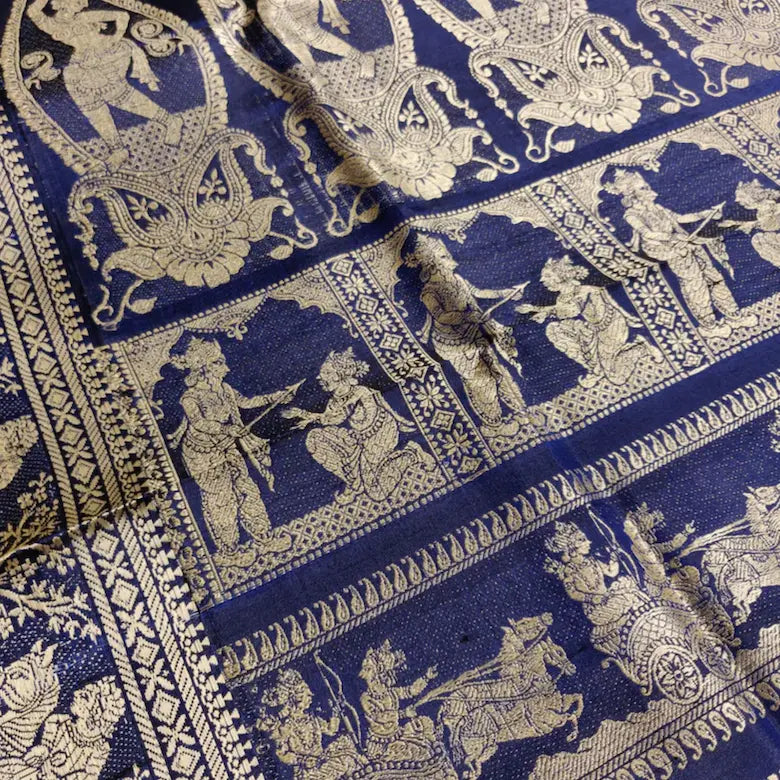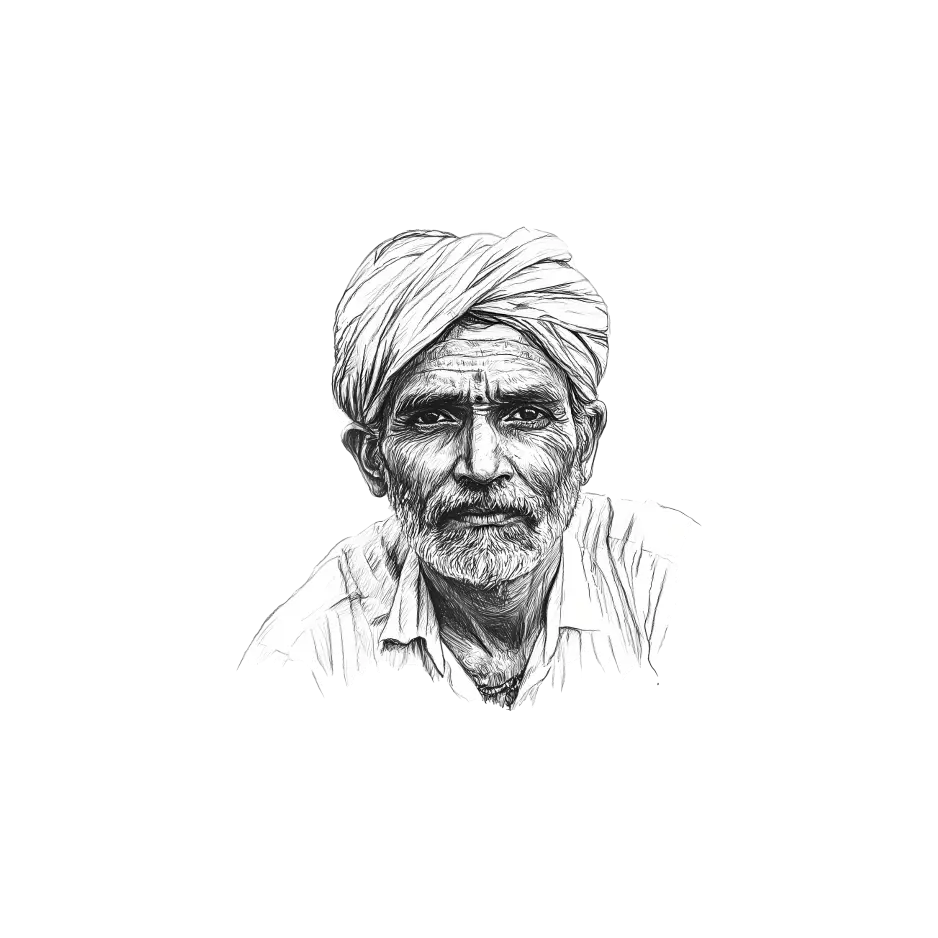
Baluchari Sarees: The Bengali Ador

A Heritage Woven in Mythology and Grace
Baluchari sarees, the storytelling weave of Bengal, are a treasure trove of art, culture, and heritage. Originating from Baluchar in Murshidabad during the 18th century, these sarees were once a favorite among Bengal’s aristocracy and zamindars. Woven with intricate motifs depicting scenes from epics like the Ramayana and Mahabharata, Baluchari sarees are a testament to Bengal’s artistic finesse and devotion to tradition.
Crafted using fine silk, Baluchari sarees are distinguished by their elaborate pallus, which feature delicate brocade work in rich hues of deep red, royal blue, and lush green. The weaving technique, known as jacquard brocade weaving, involves an extra-weft technique, creating raised patterns that give the saree its signature grandeur.

The Artistry: Motifs, Brocade Work, and Cultural Symbolism
Each Baluchari saree is a canvas of woven storytelling, showcasing timeless motifs:
- Mythological Scenes – Depictions of Krishna with Radha, royal court assemblies, and divine processions.
- Horse and Chariot Designs – Inspired by historical tales and Mughal influences.
- Architectural Patterns – Reminiscent of Bengal’s grand temples and palaces.
- Paisley and Floral Borders – Elegant embellishments adding refinement to the overall design.
Unlike printed sarees, Baluchari designs are intricately woven into the fabric, ensuring their longevity and exclusivity. The weaving process takes several weeks, making each saree a masterpiece of patience and skill.

How to Identify a True Baluchari Saree
A genuine Baluchari saree is distinguished by:
- Silken Texture with a Subtle Sheen: Authentic Baluchari sarees are made from high-quality silk with a smooth finish.
- Woven, Not Printed Designs: The motifs are raised and seamlessly integrated into the weave.
- Rich, Deep Colors: Traditional Balucharis feature deep jewel tones with contrast borders.
Heavy Pallu Detailing: The elaborate pallu tells a story, a signature element of true Baluchari craftsmanship.

The Beauty of Handloom: A Testament to Artistry
Handwoven sarees are more than fabric; they are an expression of human skill and dedication. Unlike powerloom textiles, which focus on speed and mass production, handloom sarees retain an organic touch—each weave carrying slight variations, a signature of authenticity. The drape, softness, and breathable nature of handwoven fabric make them superior to machine-made alternatives, ensuring comfort and elegance that only improves with time.

Meet the Artist: A Weaver Rewriting Her Story
In the quaint town of Bishnupur, 42-year-old Sharmila Devi sits at her loom, a place she never imagined herself before. Once a housemaker, she took up weaving after her husband, a master weaver, encouraged her to try her hand at the craft. What began as curiosity soon turned into a passion. Sharmila now weaves intricate Baluchari sarees with a precision that rivals seasoned artisans. For her, every saree is more than a weave—it is a journey, a transformation, a silent yet powerful story of perseverance and reinvention.
